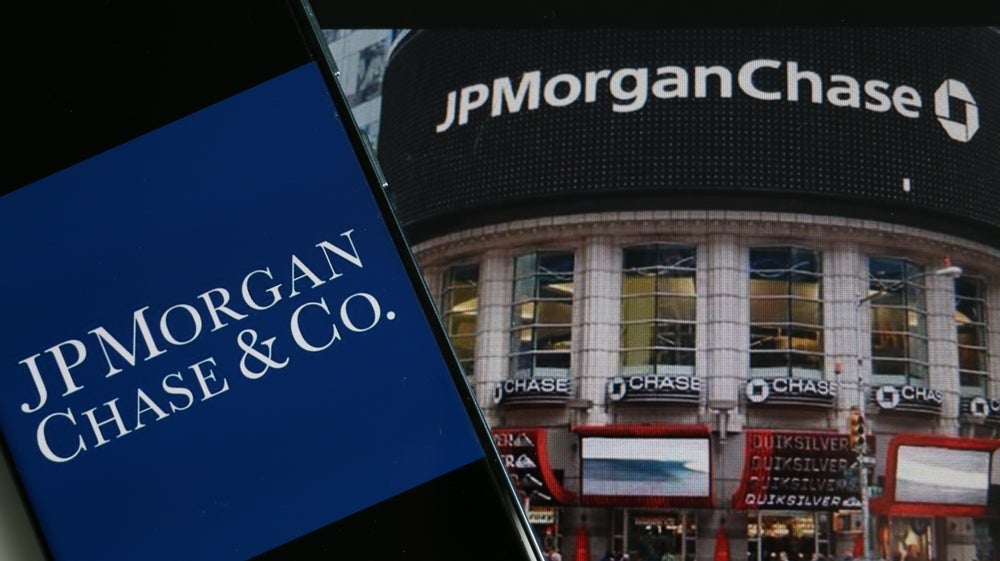‘superbanks’ has changed dramatically over the past six months. But
the concentration of consumer banking into fewer and fewer players
may not address underlying problems in the market, and still leaves
many challenges for governments and regulators. Hugh Fasken and
John Hill report.
Back in May when RBI first published its table of
‘superbanks’ (see RBI 592), the world’s banking industry
was a very different market. Six months later and things are very
different (see table below) – some of the biggest brands
have disappeared in the chaos of desperate mergers and
acquisitions, nationalisations and shocking banking failures. A
much bigger, expanded version of this table, analysing the top 50
retail banking groups, will appear on the new www.retailbankerinternational.com
website launching at the end of November.
By all accounts, 2008 will be seen as one
of the most turbulent years in the history of banking – though 2009
is looking similarly downbeat as the crisis starts to migrate to
the Asia-Pacific region and other emerging markets (see
Industry turmoil extends to Asia).
Third- and fourth-quarter 2008 figures,
and indications on 2009, from US, European and Asian financial
institutions reveal an industry fast readjusting to a high-risk,
low-profit environment.
HSBC, for instance, viewed as a bellwether
for the global banking market, stated in its third-quarter figures
that loan impairments in Hong Kong and China, and slower economic
growth in Latin America and the rest of Asia-Pacific, led to a
greater impairment of consumer credit balances (see News
Digest).
The upshot across the world will be more
M&A activity as banks look to cut costs and benefit from
greater scale – though if one conclusion can be drawn from the
current crisis it is that size has not been a saving factor.
Wachovia, Royal Bank of Scotland, Washington Mutual, Fortis: all
very big banks with billions of dollars in assets and all, now,
either gone, nationalised or fractions of their original
selves.
What has helped is diversification
geographically and in terms of business segments, as well as a
solid funding base (HSBC being a strong case in point). What killed
HBOS in the UK and led to its rapid, controversial take-over by
Lloyds TSB, for instance, was its over-reliance on wholesale
funding (despite being the UK’s largest retail savings bank) and an
almost 100 percent focus on the UK (in particular, the
fast-dwindling UK housing market).
The creation of national
champions
How well do you really know your competitors?
Access the most comprehensive Company Profiles on the market, powered by GlobalData. Save hours of research. Gain competitive edge.

Thank you!
Your download email will arrive shortly
Not ready to buy yet? Download a free sample
We are confident about the unique quality of our Company Profiles. However, we want you to make the most beneficial decision for your business, so we offer a free sample that you can download by submitting the below form
By GlobalDataNevertheless, the second half of 2008 has
seen the creation of more ‘national champions’: in the US, the
Wells Fargo/Wachovia deal (see RBI 600); in Germany, the
Commerzbank/Dresdner deal (see RBI 598); in the UK, the
Lloyds TSB/HBOS merger (see RBI 599); and, in France, the
merger of Caisse d’Epargne/Banque Populaire (see RBI
600).
More will surely follow: banks in Spain
are most likely to consolidate, as might ones in markets such as
Ireland, India, The Baltics and Russia as well as further deals in
the US.
For regulators, the domination of a
country’s banking market by fewer and fewer, and bigger and bigger,
banks will continue to cause problems (as will the need to, at some
point, decrease the excessive deposit guarantee levels rifled into
the markets to improve stability).
Banks will not be allowed to fail, for
instance, and will require much tougher regulation to ensure they
remain stable and viable – huge challenges for governments over the
coming years.
The goal will be to get away from the
sense that banking markets across the globe have now effectively
been quasi-nationalised with unlimited government support.
RBI’s new website will be launching
soon – please visit us online to see the substantially expanded
service.
| TRENDS Superbanks-the world’s largest retail banking groups ranked by retail deposits |
|||||||||||||||
| . | Nos of retail banking markets |
Main retail banking market(s) |
Worldwide |
Group cost-income ratio, H108 |
|||||||||||
| Branches | ATMs | No. of retail customers(m) | Group profit after tax, H108 ($bn) | Group profit after tax, FY07 ($bn) | Total group assets, FY07 ($bn) |
Total retail loans and advances, FY07 ($bn) |
Total retail deposits, FY07 ($bn) |
Retail profit before tax, | Profit per retail customer, FY07 ($) |
Retail profit before tax, H108 ($bn) | Profit per retail customer, H108 ($) |
||||
| HSBC | 83 | UK, US, Global | 10,100 | 17,027 | 110 | 7.72 | 19.13 | 2,354 | 498 | 1,162 | 5.90 | 46 | 2.31 | 18 | 51 |
| Royal Bank of Scotland (1) | 14 | UK, US | 4,500 | 13,000 | n/a | -1.34 | 13.34 | 3,700 | 434 | 1,133 | n/a | n/a | 4.84 | 322 | 48.2 |
| Credit Agricole (2) | 20 | France, Italy | 11,095 | 10,400 | 31 | 1.72 | 8.69 | 2,183 | 592 | 898 | 8.56 | 276 | 2 | 64.5 | 60 |
| ING | 17 | Netherlands, US, Germany, Global | 3,668 | 6,000 | 27.8 | 4.64 | 12.74 | 2,035 | 853 | 772 | 3.59 | 129 | 1.72 | 61.9 | 65.2 |
| Mizuho (3) | 1 | Japan | 513 | 1,500 | n/a | n/a | 3.05 | 1,541 | 320 | 693 | 7.72 | n/a | n/a | n/a | n/a |
| BNP Paribas+ Fortis | . | . | 7,500 | 10,200 | 23 | . | . | 4,021 | 785 | 654 | . | . | . | . | . |
| Wells Fargo+ Wachovia | . | . | 9,241 | 12,237 | 27 E | . | . | 1,384 | 554 | 641 | . | . | . | . | . |
| Deutsche Bank | 5 | Germany | 1,992 | 6,000 E | 13.8 | 0.73 | 8.72 | 2,867 | 311 | 608 | 1.65 | 120 | 0.91 | 65.9 | 93.6 |
| Barclays | 27 | UK, South Africa, Global | 3,918 | 13,111 | 25 | n/a | 7.64 | 2,386 | 309 | 562 | 7.10 | 284 | 2.03 | 81.2 | 56 |
| Mitsubishi UFJ Financial (4) | 2 | Japan | 1,205 | 2,508 | 40 | . | 6.23 | 1,799 | 571 | 560 | 11.96 | 299 | n/a | n/a | 66.9 |
| Industrial and Commercial Bank of China |
1 | China | 16,582 | 23,420 | 170 | 9.48 | 12.09 | 1,100 | 117 | 524 | 12.58 | 74 | 4.7 | 27.6 | 28.46 |
| BNP Paribas | 38 | France, Italy, US | 5,700 | 7,700 | 17 | 5.38 | 10.48 | 2,618 | 679 | 515 | 2.52 | 148 | 2.36 | 138.8 | 62.7 |
| Commerzbank + Dresdner | . | . | 1,894 | n/a | 15.3 | . | . | 1,514 | 429 | 472 | . | . | . | . | . |
| Caisse d’Epargne + Banque Populaire | . | . | 7,238 | 10,780 | 32.5 | . | . | 1,091 | 551 | 446 | . | . | . | . | . |
| Lloyds TSB + HBOS | . | . | 3,100 | n/a | 39 | . | . | 1,820 | 661 | 429 | . | . | . | . | . |
| Santander | 29 | Spain, UK, Brazi | 13,178 | 26,267 | 65 | 6.34 | 12.14 | 1,408 | 706 | 411 | 13.45 | 207 | 6.99 | 107.5 | 40.4 |
| Societe Generale (5) | 38 | France, CEE | 5,792 | 8,282 | 27 | 2.84 | 1.27 | 1,655 | 464 | 399 | 5.02 | 186 | 2.47 | 91 | 69.8 |
| Wachovia | 1 | US | 3,300 | 5,277 | 15 E | -9.56 | 6.31 | 809 | 271 | 391 | 8.59 | 572 | 1.14 | 76 | 75 |
| China Construction Bank | 1 | China | 13,447 | 26,135 | 156 E | 8.57 | 8.21 | 984 | 113 | 381 | 3.82 | 24 | 1.7 | 10.9 | 34.03 |
| JPMorgan Chase + WaMu | . | . | 9,335 | 13,813 | 35 E | . | . | 1,965 | 498 | 373 | . | . | . | . | . |
| Bank of China | 1 | China | 10,702 | 19,000 | 130 E | 6.52 | 9.12 | 907 | 114 | 364 | 3.01 | 23 | 1.94 | 14.9 | 37.8 |
| BBVA | 12 | Spain, Mexico, US | 7,971 | 17,136 | 47 | 4.48 | 8.21 | 776 | 426 | 343 | n/a | n/a | n/a | n/a | 36.2 |
| Bank of America (6) | 1 | US | 6,143 | 18,500 | 59 | 4.62 | 14.98 | 1,936 | 427 | 339 | 14.69 | 249 | 2.97 | 50.3 | 49.5 |
| AVERAGE | . | . | . | . | . | . | . | . | . | . | 5.32 | 202 | 2.09 | 98.80 | . |
| TOTAL | . | . | . | . | . | . | . | . | . | . | . | . | . | . | . |
|
E=estimate. Data does not include postal Notes: (1) Includes some commercial |






